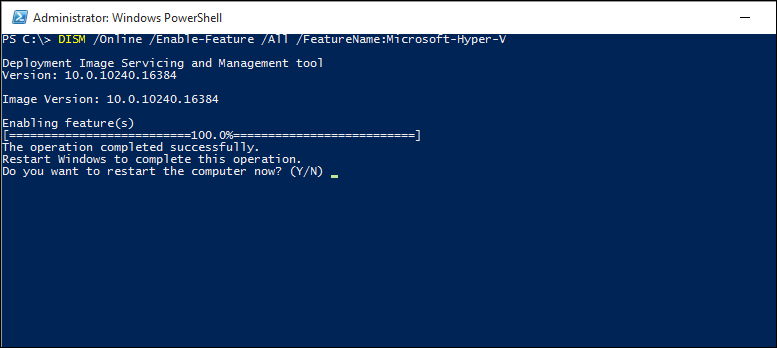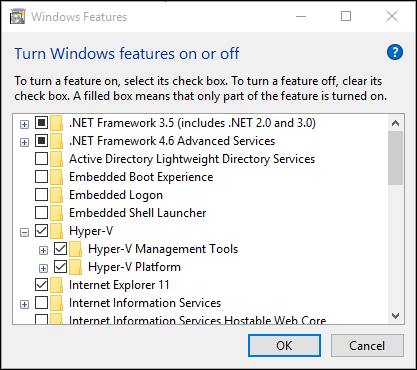Hyper-V is Microsoft’s virtualization platform. It was available on Windows Server Operating Systems but Microsoft added the Hyper-V functionality to Windows 8.1 and Windows 10. With Hyper-V, you can virtualize server operating systems in the data center or Windows phone environments on your desktop and most everything in between. It is also a great tool for developers that want a safe sandbox to test software.
With the help of virtualization/Hyper-V, you will be able to run the software that requires an older version of Windows or non-Windows operating systems. Here is the simple guide on how to install and enable the Hyper-V on Windows 10. Follow the below simple steps to do so.
Also Read
Download Dolby Audio Driver for Windows 11/10/8.1
Fix: Twitch Xbox No Sound or Video
How To Fix External Hard Drive I/O Device Error in Windows 11/10
Fix: Win+Shift+S Not Working on Windows 11/10
Fix: Minecraft “You Need To Authenticate to Microsoft Services” Error
How to Link Your Microsoft Account via microsoft.com/link

Page Contents
Reasons to use virtualization
Virtualization allows you to:
- Run the software that requires an older version of Windows or non-Windows operating systems.
- Experiment with other operating systems. Hyper-V makes it very easy to create and remove different operating systems.
- Test software on multiple operating systems using multiple virtual machines. With Hyper-V, you can run them all on a single desktop or laptop computer. These virtual machines can be exported and then imported into any other Hyper-V system, including Azure.
Differences between Hyper-V on Windows and Hyper-V on Windows Server
Some features work differently in Hyper-V on Windows than they do in Hyper-V running on Windows Server.
Hyper-V features only available on Windows Server:
- Live migration of virtual machines from one host to another
- Hyper-V Replica
- Virtual Fiber Channel
- SR-IOV networking
- Shared.VHDX
Hyper-V features only available on Windows 10:
- Quick Create and the VM Gallery
- Default network (NAT switch)
The memory management model is different for Hyper-V on Windows. On a server, Hyper-V memory is managed with the assumption that only the virtual machines are running on the server. In Hyper-V on Windows, memory is managed with the expectation that most client machines are running software on the host in addition to running virtual machines.
Requirements
- Windows 10 Enterprise, Pro, or Education
- 64-bit Processor with Second Level Address Translation (SLAT).
- CPU support for VM Monitor Mode Extension (VT-c on Intel CPUs).
- Minimum of 4 GB memory.
To get your computer prepared to run Hyper-V, make sure that the hardware virtualization support is enabled in the BIOS first. Boot into BIOS on your computer, enable Virtualization Technologyunder System Security. Depending on the version of BIOS you are running, you may need to poke around to find it.
Steps to Install and Enable Hyper-V on Windows 10
Using PowerShell
- Tap the Windows Key.
- And search for PowerShell.
- Then open PowerShell as Administrator.

- After opening the PowerShell, enter the below command:
Enable-WindowsOptionalFeature -Online -FeatureName Microsoft-Hyper-V -All
With CMD and DISM
The Deployment Image Servicing and Management tool (DISM) helps configure Windows and Windows images. Among its many applications, DISM can enable Windows features while the operating system is running.
- Tap the Windows Key.
- And search for PowerShell/CMD.
- Then open PowerShell/CMD as Administrator.
- And enter the following command:
DISM /Online /Enable-Feature /All /FeatureName:Microsoft-Hyper-V

Through Settings
- Right-click on the Windows button and select ‘Apps and Features’.
- Select Programs and Features on the right under related settings.
- Select Turn Windows Features on or off.
- Select Hyper-V and click OK.

If you have any queries regarding this, the comment section always available for you.
